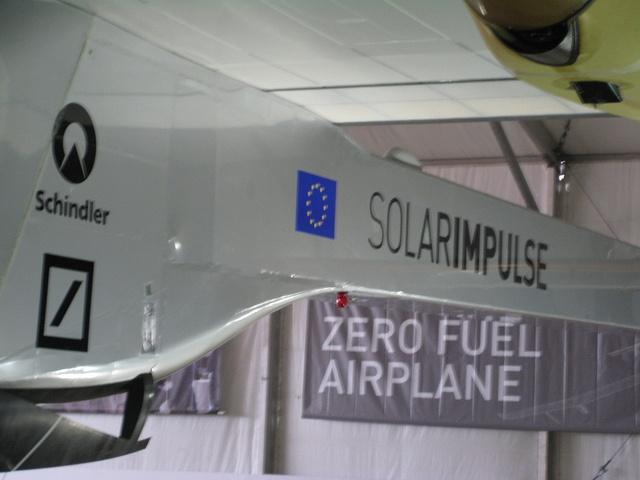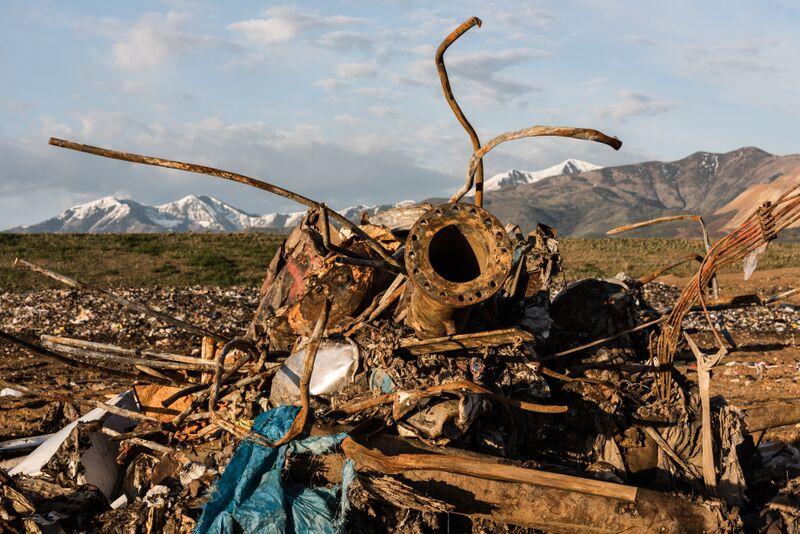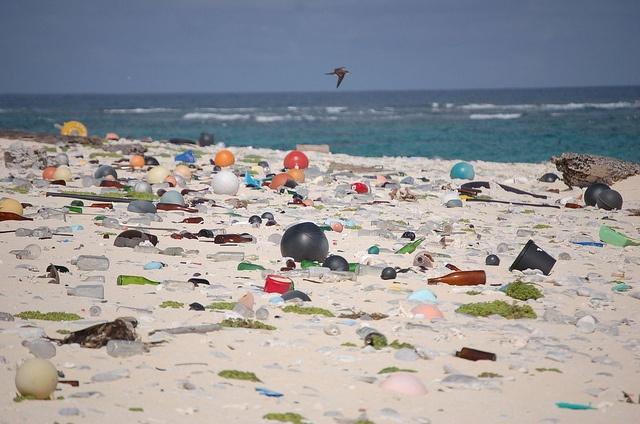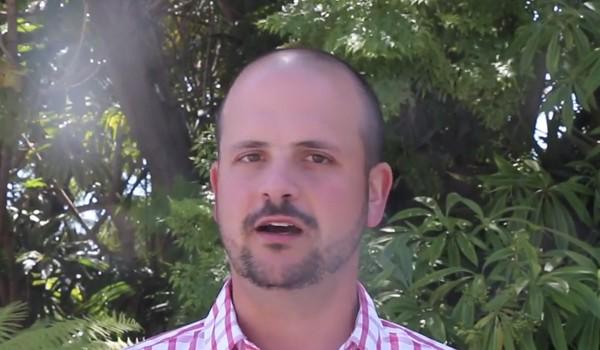IFC facilitates $50m programme to make garment industry safer


IFC, a member of the World Bank Group, is providing funding to local Bangladeshi banks in a wide-ranging program in an effort to make the country's garment industry safer for workers.
Under the program, IFC will provide $10m each in financing to five Bangladeshi banks which will allow participating banks to increase lending to garment factories specifically to improve their structural, electrical and fire safety infrastructure. Prime Bank Limited has already signed up to the initiative, and four other Bangladesh banks are expected to follow in the coming weeks.
In addition, IFC has signed separate cooperation agreements with the Alliance for Bangladesh Worker Safety and the Accord on Fire Safety and Building Safety in Bangladesh, who represent dozens of the world’s leading garment brands. The two organizations will assist garment factories to undertake the SEF upgrades, and monitor compliance.
Bangladesh’s ready-made garment industry employs more than 4m people—mostly women—in about 4,500 factories and accounts for about 80% of the country’s exports. Despite a strong desire to improve worker safety, IFC says that many factories have found it difficult to access the capital necessary to make the improvements necessary to meet buyer’s standards.
Green Aviation Climbs to New Heights on Multiple Fronts


This turns out to be quite a week for green aviation. First, an incredible milestone in the historic journey of the Solar Impulse as the fuel-free aircraft successfully completed a five-day crossing of the Pacific from Japan to Hawaii, the longest solo manned flight in history. While the realization of commercial solar-powered flight is likely still decades away, this inspirational journey sets a high bar against which all other efforts must ultimately be measured.
Then, United Airlines, announced that it would invest $30 million in a program that would produce jet fuel from trash. Pleasanton, California-based Fulcrum BioEnergy specializes in producing both aviation and diesel fuel from ordinary household waste. The company has committed to produce as much as 180 million gallons of this fuel per year. Fulcrum’s process, according to spokesperson Karen Bunton, “has been thoroughly vetted by numerous third parties including the U.S. Department of Defense and the U.S. Department of Agriculture” and has been found to meet “all of the aviation industry and military technical requirements and specifications.”
Fulcrum is preparing to begin construction on the Sierra BioFuels Plant near Reno, Nevada, that is expected to produce 10 million gallons of ethanol annually using household garbage. Bunton said the plant used a modular design that can be “easily replicated and scaled to build larger facilities that will produce between 30 and 60 million gallons of competitively-priced jet fuel or diesel per year.”
This is hardly United’s first venture into alternative fuels. In 2013, the airline signed an agreement with AltAir Fuels to purchase 15 million gallons of biofuel derived from camellia, a distant relative of canola. The fuel, which is produced in Southern California, is being used exclusively on flights taking off from LAX. Back in 2011, United flew a commercial leg between Houston and Chicago with a blend of 40 percent algal-based biofuel from Solazyme.
Also announced last week, Virgin Atlantic has cut its carbon intensity while increasing profitability, primarily by switching to more efficient aircraft, like the Boeing 787 Dreamliner. The company’s level of carbon dioxide emissions per mile traveled was down 10 percent from 2007 levels, putting it on track to reach its ultimate goal of a 30 percent reduction by 2020.
At the same time, the company turned a profit for the first time in three years. Said Virgin’s CEO, Craig Kreeger: “Our latest sustainability figures show that profitability can be de-coupled from carbon, which is fantastic news for our airline and our industry.
"Last year we successfully delivered on our recovery plan, posting a profit for the year ending December 2014, and we are now looking to an even more sustainable future, in every sense of the word.” The company is also working with LanzaTech to incorporate alternative fuels produced from waste gases.
And if all that wasn’t enough, on July 10, the Airbus, all-electric E-Fan, will make a demonstration flight across the English Channel. This single-seat prototype is expected to pave the way for production models E-Fan 2.0 and E-Fan 4.0 and ultimately a short-range, regional airliner in the long term.
As the battle against climate change heats up, both airlines and aircraft manufacturers are stepping up their efforts to come up with greener alternatives. Air travel has become a deeply entrenched and highly valued aspect of modern life that many will be reluctant to forsake. In 2013, some 3 billion people took to the skies. At the same time, emissions from aircraft are significant contributors to climate change, estimated at 5 percent of all greenhouse gas emissions, not only because of the large amount of fuel consumed by each airplane and the large number of airplanes, but also because the emissions are deposited directly into the upper atmosphere.
That number could grow, based on the current trend, to as much as 15 percent of all GHGs. So, it’s good that these efforts are taking place. At the same time, it raises the question of whether enough is being done.
Image credit: Wiser Earth: Flickr Creative Commons
Photos: Audi Sponsors Landfill Gas Capture in Utah


By Geoff Livingston
Esther Davis is the compliance and safety coordinator at the Trans-Jordan Landfill in South Jordan, Utah right outside of Salt Lake City. She also serves as an environmental educator.
She spends a good portion of her day educating a wide range of people — from local schoolchildren to bloggers like me — about how the Trans-Jordan Landfill, in partnership with Granger Energy, transforms methane gas produced in the landfill into energy. This energy supplies 4,500 homes in nearby Murray, Utah.
I visited the Trans-Jordan landfill as part of a documentary team producing digital content for the carbon-offset program Audi supports in partnership with 3Degrees. This program offsets the assembly, distribution and the first 50,000 miles of driving for the Audi A3 e-tron, a plug-in hybrid electric car coming this fall.
Pound for pound, the comparative impact of methane on the climate is 25 times greater than carbon dioxide over a 100-year period, according to the U.S. EPA.
Landfills account for approximately 18 percent of total U.S. anthropogenic methane (CH4) emissions. Further, methane accounts for nearly 10 percent of all U.S. greenhouse gas emissions from human activities, explaining Audi’s interest in funding efforts that turn the toxic gas into a cleaner form of energy.
Davis showed us how the landfill takes in local waste, a wide variety of refuse that ranges from beaten-up sneakers and unusable building materials to soiled diapers and foods.
I listened to her explain the process to our team, as well as two sets of schoolchildren. Davis is a grandmother in her personal life, and it was clear she understands kids. These kids were amazed to learn about how their garbage is collected and its impact on the earth. They cheered as the bulldozers flattened large pieces of waste.
“Educating children about landfills and their impact on the environment is the most rewarding part of my job,” Davis said. “Children inherently understand that they can make a difference with our earth in the choices that they make.
"I share with them that we gather the landfill gas that could otherwise go into the atmosphere and turn it into the energy that powers their homes and schools. They are amazed to know that their garbage is not polluting the atmosphere but helping to keep it cleaner by using this gas instead of coal power.”
As the waste breaks down over time, toxic methane is produced. At many landfills, methane is burned in a flare so that it isn't released into the environment. While this is okay, it doesn’t do anything with this potential source of energy.
After Trans-Jordan’s bulldozers break down and plow over thousands of tons of trash and fill in a portion of the landfill, Granger Energy sets up pumps on top of the landfill to capture the gas.
From there, Granger moves the methane into a nearby facility where it is separated from other gases, and turned into a more usable energy source.
Three massive turbines burn the gas and turn it into electricity that is then sold to a local utility or other electrical customers. This significantly reduces methane emissions, and provides an alternative energy source to fossil fuels, all while providing electricity 24 hours a day, seven days a week to nearby Murray.
The overall annual emissions reduction at Trans-Jordan is 136,000 metric tons of CO2 equivalent (CO2e).
“Working at a landfill is not a job that most people would think would be a satisfying one for someone who has a deep appreciation for the environment,” Davis said. “However the fact that we at Trans-Jordan Landfill not only recycle, compost green waste and help residents handle their household chemicals properly, but we also create a renewable fuel using what is a potent greenhouse gas to create electricity is indeed quite satisfying. Now that is music to this environmentalist’s ears.”
It was really quite amazing to see this story unfold in person. Just starting out with the Utah sunrise coming through the gas pumps on top of the landfill was incredible. Then watching the seagulls fly into the landfill to pick at the refuse while children watched the bulldozers manage our waste was esoteric to say the least. Finally, the tremendous sound of the massive turbines working to turn toxic gas into alternative energy was powerful.
The Audi-sponsored landfill program truly is a testimony of the old adage to make lemonade from lemons.
A former journalist, Geoff Livingston continues to write, and has authored four books. Most recently he published his first novel "Exodus" in 2013, co-authored "Marketing in the Round," and wrote the social media primer "Welcome to the Fifth Estate." Professionally, Geoff founded Tenacity5 Media, a marketing consultancy serving companies and nonprofits. He has advised more than 10 members of the Fortune 500.
'Halo Effect' of CSR Allows Companies to Get Away with Corruption


<
A new study shows that companies with corporate social responsibility (CSR) programs tend to get more favorable court decisions on corruption cases completely unconnected to CSR – and that's a problem.
One of the tenets of good CSR is that companies that care about being good corporate citizens can also increase their profits, because, oftentimes, sustainability and good ethics are winning business practices, as well as social ones.
But, as many of you know, a lot of companies use CSR as chiefly a marketing tool, to give the company a better public image while it continues to follow the same, old, dangerous business practices that leave our planet worse off. Some call this greenwashing, but I think it's simply lying. It is an outdated form of corporate greed and short-term thinking that has no place in our modern globalized world.
Now, a study from Harrison Hong of Princeton University and Inessa Liskovich of the University of Texas found that this type of CSR, aimed at making a company look good, has the beneficial side-effect of making it more likely the company gets away with a crime, specifically, bribery as defined under the Foreign Corrupt Practices Act.
The study found that, among prosecuted firms, those with the most comprehensive CSR programs tended to get more lenient penalties. Their analysis ruled out the possibility that it was firms’ political influence, rather than their CSR stance, that accounted for the leniency: Companies that contributed more to political campaigns did not receive lower fines.
The last thing I want is for companies to create CSR programs just to improve their likelihood of escaping prosecution for other crimes. And not just because this is a bad for society, but, frankly, it isn't good CSR either.
“We estimate that either eliminating a substantial labor-rights concern, such as child labor, or increasing corporate giving by about 20 percent results in fines that generally are 40 percent lower than the typical punishment for bribing foreign officials,” the report's authors wrote.
That is why we need to push companies to implement wide-ranging CSR programs and standards. There is a big difference between a company like BP spending money on a massive PR campaign alongside a few donations to coastal victims of its massive oil spill (for which it got a multibillion-dollar fine), and a company like Unilever willing to implement zero-deforestation throughout its supply chain, and including NGOs and communities in the accountability process.
There is also a role that we must play as consumers. We can't make courts hold companies accountable for corruption, but we can ensure that we only do business with, or buy products from, companies that truly care about people and planet alongside profit. That means regularly checking resources such as the Good Shopping Guide to see if companies are truly ethical, and pushing companies that are lagging, such as PepsiCo and its resistance to sourcing conflict-free palm oil, to be leaders.
CSR is just one piece of the puzzle. This once again demonstrates that the true power is in our hands.
Image Source: Chris Potter
Anthropocene: On the Substance of a New Idea


By Christian Schwägerl
In February 2000, Paul J. Crutzen erupted at a scientific conference in Mexico. Five years previously, the Dutch-born atmospheric chemist had been awarded the Nobel Prize for being one of the first to recognize and investigate the dangers to the protective layer around Earth. Crutzen’s findings were a vital contribution to the international prohibition of the most harmful of these gases in 1988 and to enabling the ozone layer to slowly regenerate.
Over his entire career, Crutzen gathered materials showing how humans have changed, influenced and damaged the earth – often, as the case with the ozone layer, not even with malicious intention, but rather from pure ignorance.
At the Mexico symposium, on the International Geosphere-Biosphere Program, he listened to one lecture after the next in which the present period was vaguely described as the ‘Holocene,' as geologists call the period in Earth’s history since the last ice age nearly 12,000 years ago.
The Nobel Prize winner’s dissatisfaction with this word grew steadily until finally he stood up to interrupt the speaker. "We no longer live in the Holocene," Crutzen declared gruffly. "We live in the, in the, in the … Anthropocene."
In Greek ‘Anthropos’ means human being as such, the final syllable ‘-cene’ deriving from the word for ‘new.' So, Anthropocene stands for a new chapter in Earth's history shaped by human actions. Crutzen's spontaneous intervention was driven by his insight into a fundamental transition: Humans certainly are the strongest force in nature, but they have become the dominant force of change on Earth. Crutzen’s small outburst first only created a stir at the event. For quite some time, the new word was barely noticed outside of geology.
But that is changing fast. The idea of the Anthropocene now engages politicians, artists, ecologists, humanities scholars and ethicists. Ban Ki-Moon, General Secretary of the United Nations, opened the last Rio environmental summit with the words, "Welcome to the Anthopocene." The Berlin House of World Cultures received funding from the German Federal Parliament for a three-year international project to explore the idea jointly with the Max Planck Society and the Deutsche Museum. The Smithsonian in Washington, and many institutions in the U.K. and elsewhere, are starting to engage the public in the debate about what it means to live in the Anthropocene.
Most important of all is probably the work of the Anthropocene Working Group. This body of scientists has the task of casting a vote in 2016 as to whether the Earth’s epoch in which we currently live should be officially renamed. Astonishingly, Crutzen’s spontaneous intervention has developed into a universal idea that has found attention worldwide and could even become the generic scientific term for all of mankind’s activities.
Primarily the Anthropocene idea is a scientific hypothesis: Mankind has changed the planet not only in a global dimension, but also in a long-term sense, to the point that this will remain recognizable even in the far-off future. So, it is not merely scratches in the Earth’s system that we leave behind, but changes in how it functions. Even if mankind disappeared from Earth tomorrow, interested visitors in 100,000 or even several million years could still see that we have been here. Just as geologists today investigate the shells of extinct ammonites or new kinds of rock strata as ‘markers’ of earlier impacts on Earth’s history, so in this imagined future there would be indications of the ‘epoch of mankind’ in stubborn techno-fossils, new types of substances, globally altered distribution patterns of animals and plants, and in the bones and pollen grains of bred life-forms, as well as in such artifacts as cities that have become geologic strata in which glass, metals and rocks are wildly mixed.
The pieces of hard evidence are numerous: The carbon dioxide emissions that have constantly grown since the onset of industrialization are sufficient to change the world’s climate for tens of thousands of years, turning the seas so acidic that many algae and corals can no longer live in them. The Haber-Bosch process means that mankind, in the production of fertilizers, has already extracted more nitrogen from the air and introduced it into eco-systems than was there naturally – with massively negative consequences for biodiversity. Globally, forests and savannas are plowed up so as to produce food for humans.
Taken together, global agricultural areas are as large as South America. While humans and their livestock made up only a few percent of the biomass of larger animals at the end of the last ice age, today they comprise 97 percent. Wild animals make up just 3 percent when put on the scales. Accelerated consumerism has resulted in metals and minerals disappearing in certain places due to mining, and reappearing in other places in new material combinations, for example as heaps of electronic scrap.
To this can be added numerous other long-term ‘markers,' measurable or visible, of the Anthropocene: for example, the artificial radioactive elements that have entered the world since 1945 as a result of atomic bomb explosions and the use of nuclear power; the vast amount of dumped plastic that could wrap the whole world once over in plastic film; and the millions of various synthetic chemicals that have spread and accumulated around the Earth’s system. Radionuclides and plastic are at present considered the clearest measurable signal as to why the official dawn of the Anthropocene should probably be dated at 1945.
Measured by this hard evidence, the Anthropocene sounds like something that should in fact be combated. As a summation of all our environmental problems it rather resembles a terrifying vision. Or does it, even worse, legitimize yet more destruction of the environment? Critics assert that the word ‘Anthropocene’ sounds like ‘anthropocentrism.' Is that perhaps supposed to be the idea of the Anthoropocene: that earth is owned by mankind, that we have the right to submit it to his technology and capitalistic logic, to exploit and rebuild it according to his needs, and to make subjects of animals, plants and living spaces, not only in a metaphorical but a real sense, but right down to the very last corner? So, that if something goes wrong, humans can react to it with such large-scale technology as genetic engineering and artificial cooling gases?
Currently Anthropocene is often seen as the sum of all environmental problems – or as a synonym for all techno-fixes humans can use to survive their wrongdoings with regard to climate and ecosystems. But I would like to offer another reading of this important term, one that is neither purely negative nor purely positive – an interpretation that stresses the responsibility we have for shaping our collective future. In such a perspective, the Anthropocene is a tool that helps us become aware of a fundamental global transformation.
To speak of the Anthropocene could mean to integrate human history into natural history. We no longer see ourselves as a power coming from without, but rather we recognize our origins from the earth’s crust and our interconnectedness with all other forms in which nature manifests itself. The Anthropocene can help to extend our temporal horizon: In an era in which billions are shifted around the world in nano-seconds, and companies, like governments, make decisions looking no more than a few months ahead, the Anthropocene idea creates the sense of a long past, and above all a long future.
By shifting the focus on to the far-off future, our sensors for the long-term consequences of our actions become heightened. Also, the ideological basis of ruthless nature exploitation – namely that there is a clear border between ecology and economy, between culture and nature, and that what we call ‘environment’ is an external, economically worthless factor – is refuted by the Anthropocene concept: Nature appears as the primary economy of earth. By removing the illusion of a ‘great out there’ which we can help ourselves to and into which we can dump all our rubbish, the Anthropocene idea creates a new imperative: to design cities, agriculture, fishing, technology and production in such a way that they enrich rather than impoverish the biosphere.
Exactly how the Anthropocene will proceed is not laid down in any master plan nor ideology. When I once accompanied Paul J. Crutzen to a conference, on the way there he said to me in that characteristic mix of humility and brilliance: "What the Anthropocene is precisely? I don’t know." How the ‘human epoch’ will proceed depends on collective action, on social movements and economic, power-based decisions. The fact that the consciousness of one species can have such profound impact on Earth is something new in the history of nature. Jürgen Renn from the Max Planck Institute for the History of Science describes it as follows: "The Anthropocene is a process that reflects upon itself."
Image credit: Flickr/U.S. Fish and Wildlife Service
Christian Schwägerl, born in 1968, is the author of the book "The Anthropocene - the human era and how it shapes our planet," published by Synergetic Pressworks in 2014. The German version of his book inspired the ‘Anthropocene Project’ at the House of World Cultures in Berlin and the special exhibition titled ‘Welcome to the Anthropocene’ on show until mid-2016 at the Deutsches Museum in Munich. Other books by Christian Schwägerl are ‘11 Looming Wars’ (2012) and ‘The Analogue Revolution’ (2014), both published in German. The author is a regular contributor to GEO magazine, Frankfurter Allgemeine Newspaper, Yale E360 and other media outlets. He runs the Masterclass ‘Future of Science Journalism’ for the German Robert Bosch Foundation.
Video: Mark Rossolo, UL Environment on "The ROI of Sustainability"


This article is part of a series on “The ROI of Sustainability,” written with the support of MeterHero. MeterHero helps companies and organizations offset their water and energy footprints through consumer engagement. To follow along with the rest of the series, click here.
At Sustainable Brands 2015, we asked thought leaders to define the ROI of Sustainability in their words. In this video, Mark Rossolo of UL Environment shares some thoughts:
https://youtu.be/bbBNDo7b7pY
About Mark Rossolo: Mark Rossolo is the director of public affairs for UL Environment where he leads the organization’s strategic outreach and advocacy efforts. Representing UL on the national, state, and local levels, Mark campaigns on behalf of the organization to drive public awareness about issues related to indoor air quality, green products and sustainability. Mark is a sought after resource on green building and sustainable procurement and has given speeches and training sessions all over North America on indoor IAQ, energy efficiency and sustainability.
Cuba Lifted from Terrorist List, Readies for Wave of U.S. Tourists


By Glen Thompson
When Cuban President Raul Castro toasted his 84th birthday on June 3, he was celebrating not only his birthday, but also two major diplomatic milestones: Cuba's first attendance at the Summit of the Americas Conference on April 10, and Cuba's official removal, on May 29, from the State Sponsors of Terrorism list, issued by the U.S. State Department.
The first Summit of the Americas Conference took place 200 miles from Cuba in Miami, Dec. 9-11, 1994. The Summit was forged by the Clinton administration as a gathering of all democratically-elected heads of state in the Western Hemisphere. The only country not invited was Cuba.
Canadians may recall images of water canons and tear gas when Quebec City hosted the third Summit in 2001. The Summit is most remembered as the site of the U.S. Secret Service prostitution scandal, involving 21 women, that marred the 6th Summit in Cartagena, Colombia in 2012. Cuba's attendance this April, at the 7th Summit in Panama, was a surprising diplomatic turn around.
After the election of President Barack Obama, Venezuelan President Hugo Chavez and others began a hard push for the inclusion of Cuba leading to a weakly issued invitation to the 2009 conference in Trinidad and Tobago. Obama attended; Cuba did not.
After the 2012 Summit scandal and several countries renewing the threat to squash the conference over the lack of Cuban participation, the Summit had lost its zeal and was on the verge of being abandoned. Then an unexpected political breakthrough occurred between the United States and Cuba. Top secret meetings held in Ottawa, Canada, resulted in a diplomatic thaw, and Cuba eventually accepted an invitation to the Panama Summit.
Ironically the Summit, which began by politically isolating Cuba, became the historic meeting place between Obama and Castro. Despite the Florida Keys being only 90 miles from Cuba, this was the first, face-to-face, meeting of the two country's leaders in over 50 years.
As part of a diplomatic agreement reached in December, President Obama ordered the State Department to review its list of State Sponsors of Terrorism. On April 8, two days before Obama met with Castro, the State Department recommended Cuba be dropped from the list. On April 15, Obama filed the 45-day legal notice to rescind, and on May 29 Cuba was removed from the list. After a stalemate that lasted for five decades, suddenly the political dam had burst.
Cuba's removal from the terrorist list is part of normalizing diplomatic relations, but it also makes it easier for Americans to travel to Cuba. The chic forbidden paradise so many Canadians and eastern Europeans had to themselves will soon be shared with great waves of American tourists. The trendy firm AirBnB, began taking online rental-house bookings for Americans visiting Cuba in April. American Express is preparing for business on the island and MasterCard is already operating in Cuba.
Are these changes coming faster than the Cuban regime can manage them? Cuba's new president, Raul Castro, was a 1950s revolutionary alongside of his brother Fidel Castro. As Che Guevara's daughter, Aleida Guevara, said at a conference Kamloops, British Columbia, earlier this year: "Raul introduced my father [Che] to Fidel; he was there at the very beginning." Will the aging Cuban leader be nimble enough to channel the economic influx, or will the onset of American tourism and investment become an American Trojan Horse?
After Raul Castro, who will defend the Cuban Revolution? In January, Aleida Guevara told CBC: "I am a pediatrician, a doctor; I defend life, but I can shoot also, because I am trained to defend my national country, my territory."
As Cuba emerges from American economic suffocation, its future is promising but remains uncertain. The next Cuban leader will be pivotal.
Cuba was placed on the terror list during the Ronald Reagan era in 1982. Three countries remain on the State Department's' terror list, Syria, Sudan and Iran.
Image credit: Flickr/Alexander Schimmeck
Glen Thompson is an independent freelance journalist.
Fujitsu scoops Responsible Business of the Year 2015 at BITC awards


Global technology giant Fujitsu scooped the title of Responsible Business of the Year 2015 at this year’s Business in the Community’s Responsible Business Awards.
Taking over the mantle from National Grid, the company was recognised for embedding responsible business practice into its business strategy and for its multi billion pound investment into technology as a force for good to address global challenges such as tackling pollution and congestion in cities; advancing agriculture to feed more people globally; and monitoring health problems to assist the elderly to live well for longer, judges said.
The company also challenges industry norms - half of all its budget holders are women and it recruits twice as many female graduates as the technology industry average; apprentices are paid 50% higher than national minimum wage, and it has pioneered datacentres powered by 100% renewable energy.
Duncan Tait, head of EMEIA region for Fujitsu commented: “Projecting forward 20 years, world population growth, energy issues, air pollution, food and water shortages and an ageing population will impact every government and business. Solving these issues responsibly will be a fundamental driver of a business’s ability to grow and become financially sustainable.
"The collective actions of business leaders today will shape the future of our planet. It is our duty to convince the leaders of tomorrow to build shared value creation into their business models. This should be the only accepted norm as it is the only way companies can truly be sustainable.”
To see a full list of winners and their case studies click here.
M&S board members praise Living Wage stitch-in campaign


The board of high street retailer Marks & Spencer (M&S), has agreed to meet with campaigners to discuss paying the Living Wage, following a creative campaign coordinated by the Craftivist Collective and ShareAction’s AGM Army.
The campaigners coordinated a series of “stitch-ins” at branches of M&S across the UK, for craftivists to sew messages onto M&S handkerchiefs, which were delivered to the board, celebrity endorsers, and major shareholders of the British retail giant in advance of its annual general meeting at Wembley Stadium in London.
Robert Swannell, chairman of the board, told over 500 shareholders at the recent meeting: “This campaign was a test case for how these campaigns should be run” and committed to meet with campaigners to discuss the issue over the coming months.
Swannell's handkerchief, sewn by craftivist Fran Reynolds, featured a quote by the Dalai Lama reading: “Open our arms to change, but don’t let go of your values.”
Unilever Crowdsources Sustainability Innovations


In an age when we’re desperate for new answers to old questions, the traditional top-down approach to business is no longer going to cut it. Now, more than ever, we see innovative brands shifting to more open and collaborative methods when it comes to fueling social innovation. More companies are crowdsourcing ideas from consumers.
Unilever recently unveiled the new Foundry Ideas platform at the Cannes Lions Festival. It will amplify the company's current efforts, acting as a hub for consumers and entrepreneurs to work together to tackle some of the most defining sustainability challenges of our time. It invites users to share their ideas on the platform, collaborate with others to make the idea better and have the chance to win prizes while making a big impact.
The challenges
Unilever is specifically looking for ideas and innovations that help make sustainable living more mainstream. Challenges will be regularly uploaded to the Foundry Ideas site where participants can either submit ideas or add to the ideas of others. At publish time, three ideas are open for entries, which encourage people to solve issues in sanitation, hygiene and nutrition.
The Future Shower Challenge invites participants to design the shower of the future. As we know, water scarcity is a pressing problem in many parts of the world. This challenge encourages people to invent a shower which significantly reduces the amount of water of used, while preserving or increasing the quality of the experience.
The Sanitation Challenge poses the question: How can we help 100 million people have access to toilet sanitation by 2020? Nearly 1 billion people around the world still practice open defecation, and even more use facilities that are poorly maintained, manually emptied or makeshift. This problem will not be resolved by simply building more toilets. For many, this type of behavior has been practiced for thousands of years. They do not see the need to change.
In this challenge, sponsored by Domestos household cleaning brand, participants are encouraged to present solutions that could potentially provide access to affordable and effective sanitation. These ideas could address anything from education to infrastructure to offering specific products or services. Access to proper sanitation is a basic human right and would reduce a number of preventable diseases and sanitation-related deaths.
Lastly, the Improving Global Nutrition Challenge, which is sponsored by Knorr, a Unilever food brand, addresses the issue of malnutrition by inspiring 20 million people in Nigeria to cook more nutritiously. Malnutrition is a global epidemic affecting every sector of the world. Anaemia, of which approximately 50 percent of cases are due to iron deficiency, is a major public health issue in many countries, including Nigeria. Knorr is committed to improving the health and happiness of people by making nutritious food preparation more desirable, easy to understand and affordable. With this challenge, Unilever is crowdsourcing ideas and partners who can enable behavioral change in a low-cost and repeatable way, with a population in rural locations.
The process
After the ideation and collaboration phase, the community is invited to vote for their favorite ideas. The best contributions are shortlisted to move forward and are rewarded with various prizes from a week at a top cooking school in London to sustainable home appliances. The top ideas and innovators are invited to work with Unilever (or collaborate with other partners) to develop their idea into a prototype or bring their innovation to scale.
Unilever hopes crowdsourcing puts fresh momentum behind its Sustainable Living Plan to halve the environmental impact of its products and extend its supply chain to farmers in developing countries by 2020. Since it launched it 2010, the Unilever Foundry has crowdsourced ideas from marketing campaigns to products and packaging. The latest development, Foundry Ideas, is the first time its crowdsourcing efforts will be dedicated solely to sustainability.
"We’re 5 years in to our 10-year Unilever Sustainable Living Plan to make our operations and brands more sustainable,” said Sue Garrard, senior vice president of sustainable business development and communications at Unilever. “We have made huge strides in our factories and with our suppliers. The next stage is to find people with new and innovative ideas so that together we can help transform the way we live our daily lives, for us all to become more sustainable.”